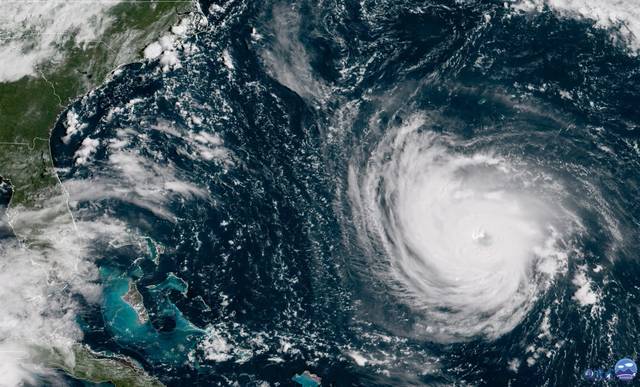U.S. forecasters: Expect near normal Atlantic hurricane season
WASHINGTON — The Atlantic hurricane season is off to yet another early start, but U.S. weather officials say it should be a near normal year.
The National Oceanic and Atmospheric Administration on Thursday predicted nine to 15 named storms. It says four to eight of them will become hurricanes and two to four of those would become major hurricanes with 111 mph winds or higher.
Acting NOAA Administrator Neil Jacobs said a current El Nino, a periodic natural warming of the central Pacific that changes weather worldwide, suppresses hurricane activity in the Atlantic. But other forces, including warmer-than-normal seawater, counter that.
Last year had 15 named storms, eight hurricanes and two major ones, Florence and Michael . Those two big storms hit the United States and together directly killed 38 people and caused $49 billion in damages. The Atlantic basin averages 12 named storms a year, with six becoming hurricanes and three becoming major storms.
NOAA said there’s a 40% chance of a normal season, with 30% chances of both stronger and weaker seasons.
“That’s still a lot of activity,” said NOAA forecaster Gerry Bell. “You need to start to prepare for hurricane season now.”
Hurricane season traditionally starts June 1, but this week subtropical storm Andrea briefly popped up, marking the fifth straight year a named storm came in May or earlier.
Bell said this year’s forecast had “competing factors” that balanced out. The El Nino brings wind changes that can keep storms from forming and reduce their strength, but this year’s El Nino is weak, Bell said.
One factor pushing the other way is the 20- to 30- year long-term natural cycle of hurricane activity. Since about 1995, the Atlantic has been in the part of the cycle of high-activity, which includes warmer water and west African rainfall, which goose storm activity. Bell said there’s no indication of change yet.
Some other non-government forecasters predict a weaker storm season than NOAA, pointing to the El Nino.
Colorado State University, which pioneered hurricane season predictions, is forecasting 13 named storms, five to become hurricanes and two to hit major status. Hurricane researcher Phil Klotzbach predicted that overall the Atlantic season will be about three-quarters strong as a normal season.
Klotzbach’s team predicted a 48% chance that a storm will hit the U.S. coastline, slightly less than the normal 52% chance. He also said there’s a 28% chance of Florida’s peninsula being hit and 30% chance the Gulf coast between Texas and the Florida panhandle getting struck. Those are slightly below average.
IBM’s Weather Company calls for 14 named storms, seven hurricanes and three majors. Accuweather calls for 12 to 14 named storms, five to seven hurricanes and two to four major storms.
Remove the ads from your TribLIVE reading experience but still support the journalists who create the content with TribLIVE Ad-Free.

